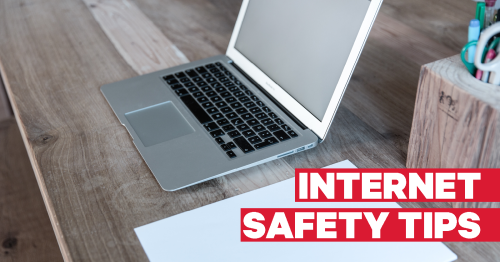When you think about your personal safety, don't forget to consider your internet usage and social presence.
 Passwords
Passwords
The first step in modern internet safety is the hardest, creating secure passwords. Your passwords shouldn’t contain personal information like pet and family names, important dates, or even significant places. It’s also safer to avoid using the same password for multiple accounts. How are you supposed to remember all of your passwords? The best options are either a flash drive with your passwords on it or password management software.
Secure Sites
When you’re entering personal information on a site, check to see if it’s secure. Sites beginning with https:// instead of http:// are secure sites, meaning the information you entered is encrypted for protection. Insecure sites have a higher potential of viruses and do not protect your personal information as well as a secure site does.
Phishing Emails
The University will never send you an email with a link asking for personal information like your login! Emails offering something that seems too good to be true in exchange for your personal information are phishing emails. If you receive these on your school email, you should report them to IT, if you receive them through your personal email, block the sender. Do not click any links on the email, even if it has an unsubscribe button.
Clickbait Articles
A lot of malware articles can be identified by clickbait titles like, “Live Forever with this One Hack” but some titles aren’t so obvious, like “New Missouri Laws You Need to Know.” If you see an interesting external article advertised on a site, try Googling the topic and reading about it from a trusted source instead of clicking on something you aren’t familiar with. It could save your computer.
Safety Settings on Social Media
Most of us like to share about our lives on social media, but the default privacy settings on social media are not usually high enough to truly protect what you’re sharing. Take some time to explore your safety settings to find out what you’re sharing online, and with whom.